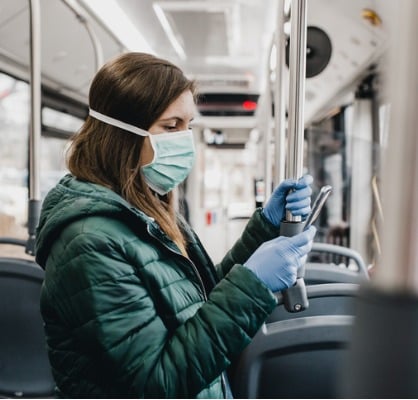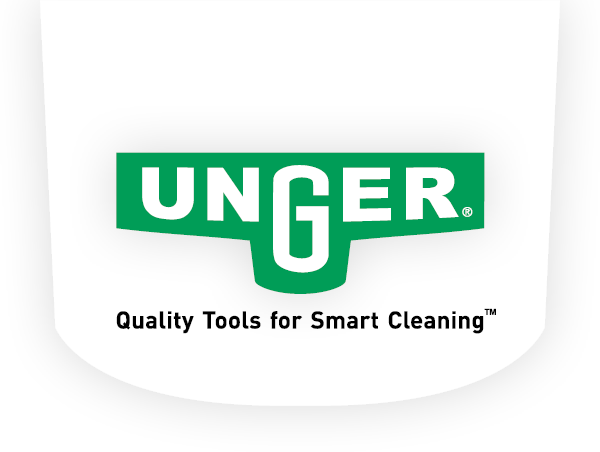NEW! Powerful Nano Filtration with Unger's HydroPower® Nano See The Product

Public Transportation Cleaning to Protect Continuity of Operation and Combat Infectious Disease
Behind the scenes of the global pandemic, public transit agencies are working relentlessly to provide services so that essential workers and the public can get to hospitals, pharmacies, and grocery stores that remain critical during periods of social distancing and shelter- in- place orders. In fact, the American Public Transportation Association (APTA) estimates that public transit will provide at least 880 million trips from April through June of 2020, making the continuity of transit services imperative.
For these public transit agencies to sustain their critical role during the COVID-19 pandemic and recover from the impact, they’re having to re-evaluate and maximize their efforts in keeping employees and passengers safer, which includes how they clean and disinfect. While keeping employees and riders safe has always been a top priority, in the wake of COVID-19, transit agencies are putting their cleaning protocols and procedures under a microscope to develop best practices that will help them to reduce the risk of infectious disease spread.
Focus on Cleaning Before Disinfection
Cleaning and disinfecting are two distinct processes, with cleaning a vital first step before disinfecting. During cleaning processes, germs, dirt and impurities are removed from surfaces, while the disinfecting process kills surface-level germs. Because dirt and other impurities on surfaces can reduce the effectiveness of disinfectants, surfaces should always be cleaned prior to use of disinfectants in order to be as effective as possible in the fight against infectious disease spread. High-risk locations, and high touched surfaces, in public transportation areas necessitate both cleaning and disinfection frequently.
Routine Cleaning of Public Transit Areas
Public transit agencies globally are implementing standard infection control practices in public, including routine cleaning guidelines. Recently the New York State Department of Health outlined the routine cleaning of public transportation to include:
- Cleaning high contact surfaces that are touched by many different people, such as light switches, handrails and doorknobs/handles;
- Dust- and wet-mopping or auto-scrubbing floors;
- Vacuuming of entryways and high traffic areas;
- Removing trash;
- Cleaning restrooms;
- Wiping heat and air conditioner vents;
- Spot cleaning walls;
- Spot cleaning carpets;
- Dusting horizontal surfaces and light fixtures; and
- Cleaning spills.
The Centers for Disease Control and Prevention (CDC) have also provided guidance on cleaning and disinfection for non-emergency transport vehicles.
Focus on Routine Cleaning, Correctly
As routine cleaning procedures undoubtedly increase in frequency to support the safety and health of public transit patrons, it’s also critical to consider how you will protect the health and safety of those responsible for executing your cleaning protocols. While your end goal is continuity of services in a safe environment, another goal to plan for is increased worker safety, especially as cleaning schedules increase and the concept of contact-free cleaning evolves.
Achieving both goals simultaneously will depend largely on the cleaning and disinfecting solutions in which public transit agencies choose to invest. When evaluating your investments, we recommend sourcing cleaning tools that align with the following features and benefits to accomplish routine cleaning of public transit areas:
Microfiber-based Cleaning Products
Laboratory tests show that microfiber cloths and mop heads reduce surface debris, lower bacteria levels by 96% and reduce the amount of harsh chemicals needed because of its unique structure. Microfiber is a very fine blend, as compared to cotton, allowing it to do a better job at trapping and holding bacteria, dust, and dirt within the actual fibers before disinfection. Cotton, on the other hand, typically pushes dirt and debris around instead of picking it up.
Cleaning solutions that leverage microfiber cleaning technology include microfiber cloths, surface cleaning kits, floor cleaning kits and restroom cleaning kits, to address all areas of public transport settings. <link each category>
Dual-bucket Mopping Systems
It’s recommended that wet floor cleaning methods are used to clean public transit and emergency transit vehicles and to avoid dry sweeping to reduce the risk of making any virus airborne. Everyone should assume that the COVID-19 virus, in particular, survives on surfaces for up to 72 hours and may become airborne if on dust.
When wet mopping floors in public transit environments, whether in restrooms, food service areas, waiting areas or rider compartments, the use of floor mopping and spot clean systems with dual-compartment buckets will separate clean water from dirty solution, ensuring the use of clean solution throughout the duration of the cleaning process. By isolating dirt into a single bucket, the result is a highly efficient cleaning process that makes a significant impact cleaning effectiveness and cross contamination prevention efforts, something a single bucket mopping system cannot ensure.
Disinfectant Flexibility
When wet floor mopping, spot cleaning, or window washing, some cleaning jobs require specific disinfectants dependent on the surface, space or level of dirt and debris. Professional cleaning tools that allow the flexibility to use your preferred cleaning solution offers the flexibility needed to tackle the job at hand. You can look for floor and surface cleaning tools that have the ability to dispense liquid from the bottle on board and glass and window cleaning kits that come with a refillable system that allows the use of your preferred cleaning solution.
Telescopic Extension Poles
Not only do telescopic poles help keep workers safely on the ground as they reach to heights of 60 feet and beyond, but they also help keep cleaning staff at a safe distance away from harmful germs and contaminants present on table and counter surfaces, glass and mirrors, heat and air-conditioning vents and walls. When used in conjunction with a full range of extension pole attachments – washers, squeegees, dusters, brushes <link these> – routine cleaning of public transit areas can be accomplished at a safe and comfortable distance, including window cleaning, both indoor and out.
Contact Free Litter Removal Tools
To help keep public transit facilities litter free, look for purpose-built grabbers and picker pins that allow workers to collect refuse without coming in direct contact with any contaminants, keeping them at a safe distance while performing their job. These tools can also minimize the need to bend over to contact debris, relieving physical strain while cleaning. High-quality litter removal tools will be strong enough for heavy-duty work, but light enough to protect the user from back and arm strain. No bending and no ladders, combined with maintaining a desirable distance, make any cleaning job safer for staff.
Cleaning for Infection Disease Control
With an investment in the right cleaning tools to protect public transit patrons comes the need to spend the time and effort on educating staff on how to properly clean and protect themselves. Cleaning tools are only as good as the training that janitorial staff receives, so when you’re sourcing effective cleaning solutions, also look for the how-to videos and best practices related to those products.
In a time of a global pandemic, the need to reassess cleaning and disinfecting protocols is eminent, but the resources you commit now to sourcing the right cleaning tools will have a positive, long-term impact on the health and safety of your public transit riders and staff, and you’ll be better positioned for future emergency responses.
Learn more about technologies and tools that help fight against infections-diseases >
Request a Demonstration of Transit Cleaning Equipment
